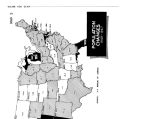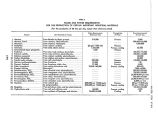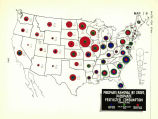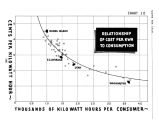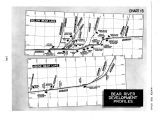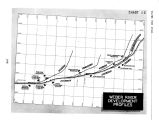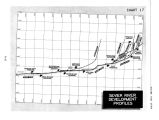| OCR Text |
Show WATER FOR UTAH UTAH'S INDUSTRIES ARE GROWING - AND CAN CONTINUE TO GROW ... The Nation Depends on Utah ... Utah for many years has been one of the Nation's most important producers of industrial raw materials. Its copper, lead and zinc have ranked very high in the supplies which have made possible the growth of the United States. Some of the largest and most productive mines of the Nation operate in Utah. ... But Utah Is Industrially Undeveloped ... However, in common with most of the Western States, Utah's contribution has followed the traditional colonial pattern of extractive industries. Its mineral resources and a large portion of its agricultural production are shipped long distances to processing and manufacturing plants elsewhere in the United States. Much labor has been and is being employed in these extractive industries in Utah, but the State has shared only to a very small degree in that major portion of employment which results from manufacturing and fabricating and much of which depends directly on Utah's raw and semi- processed natural resources. This kind of situation is not conducive to economic stability, particularly on a long- term basis. There must, therefore, be greater effort toward the development of a more integrated and diversified industrial pattern, where raw materials flow into processing and manufacturing plants and where both end- products and by- products can be readily interchanged among industry groups, thus ultimately forming a compact and interdependent structure. The war brought an upsurge of industrial activity in the State. It resulted in the establishment of the Geneva Steel plant, one of the largest in the United States. It stimulated considerable expansion in mining, particularly nonferrous. It drew attention again to the industrial potentials of the State. However, Utah has a long way to go before it can be assured the share of industrial development deserved by its reserves of industrial raw materials. Even today, its industrial structure is rudimentary and highly undiversified. This is clearly evident by the very large number of industries which do not exist in Utah. The list of employers who report to the State's Department of Employment Security reveal that the number of non- reporting categories is greater than those now established. ( See Table 5 - Utah Industrial Establishments and Employment - pages 37 to 45.) In June of 1947, the estimated total employment in Utah was 238,500, and its distribution was as follows: 17.5% in wholesale and retail trade; 14.3% in finance, service and miscellaneous groups; 10.2% in transportation, communications and utilities; 13.3% in government; 22% in agriculture; 5.5% in construction; 5.7% in mining and 11.5% in manufacturing. In November of the same year, 23,430 workers were employed directly in mineral industries - mining, milling, smelting and refining. This is approximately one- tenth of the entire working force of the State. Of the 22,000 transportation and utility workers in the State, approximately one- fifth are directly dependent on hauling mineral products or in producing electricity or services for use in the mineral industries. Mining, in 1947, provided in excess of forty million dollars in wages and salaries. Milling, smelting, refining and manufacturing provided another twenty- three million dollars in wages and salaries, while miscellaneous mineral production added another two million dollars. I" 36] |















